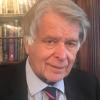This article describes the latest research and advances in Hormone Replacement Therapy and provides advice for any women who would like to know if and when HRT may be suitable for them.
Contents
- Introduction
- Why is HRT prescribed?
- When is HRT prescribed?
- Post-menopause
- Avoiding progestogen
- Premature menopause
- Post-hysterectomy
- Menopausal transition
- Conclusion
Introduction
There has been much controversy about hormone replacement therapy (HRT) since the initial publication of a Women’s Health Initiative (WHI) study in 2002. This study linked HRT with an increased risk of heart disease, stroke and cancer. However, in later publications by the same authors it is clear that they realise methodological errors. These errors were around the over dosage to older asymptomatic women (women with no symptoms), and they have as a result retracted much, but not all, of the bad news. The major reported side effects occurred in the 22% of women over the age of 70. In contrast 95% of British women on HRT start below the age of 60 and this group showed considerable cardiovascular and skeletal benefits without any significant major side effects. This is the important group relevant to our discussion but it has not stopped the advisory authorities greatly limiting the use of HRT in these postmenopausal women.
Why is HRT prescribed?
HRT is used to replace hormones that the body no longer produces following the menopause, namely, oestrogen and progesterone, and to thereby relieve the symptoms associated with the menopause. At the most simplistic level it is certain that oestrogen works well for hot flushes, sweats and vaginal dryness, but in reality the value of HRT far exceeds this.
However, the skilled use of HRT requires the understanding that different patients of differing ages with different symptoms require different doses of different hormones by different route rather than the “one dose fits all” philosophy, which was another fundamental problem with the WHI study. PREMPRO, which was the treatment under investigation, was used regardless of the symptoms – in fact most women had no symptoms, and regardless of age. The epidemiologists and investigators of this study made the mistake that no general practitioner would ever make because he/she would understand the subtleties and importance of individualisation of therapy for a particular patient. For these reasons, the WHI Study was deeply flawed and it is a pity that the consequence has been to deny patients readily available, adequate and appropriate treatment options.
Recently the public has become interested in bio-identical hormone treatment. The thinking is that that this is a new American advance. In reality it has been used in Europe, particularly France for about 30 years and essentially it is the avoidance of synthetic, or horse-derived oestrogens (traditionally used in HRT products) and instead relies upon natural, human hormones such as oestradiol, oestrone, testosterone and progesterone. Furthermore, the transdermal (through the skin) route of administration means that as there is no gastro-intestinal involvement and therefore the chance of unwanted side-effects is radically reduced. Thus transdermal oestradiol has not been associated with the increase in deep vein thrombosis that does occur with oral HRT. The transdermal application is my preferred route in virtually all patients.
When is HRT prescribed?

HRT in whatever form can be started in the postmenopausal years or after a premature menopause in younger women. It is also a vital medication following hysterectomy and bilateral salpingo-oophorectomy (removal of the fallopian tubes and ovaries) and perhaps most important of all, it is strongly indicated for various symptoms that occur in the menopausal transition, which are the 3-5 years before the cessation of periods when climacteric symptoms are usually at their worst. HRT then should not simply be limited for women whose periods have stopped
Post-menopause
The symptoms associated with the menopause are usually hot flushes, sweats, headaches and vaginal dryness and these can easily be treated by oral or transdermal oestradiol in the appropriate dose. For those women who have a uterus, cyclical or continuous progestogen (drug similar to progesterone) is necessary either to produce a regular bleed or amenorrhoea and prevent swelling of tissue in the womb (endometrial hyperplasia). The advisory bodies suggest that the lowest dose of oestrogen be used for the shortest possible time but in reality we need to use the dose that works and this would be different depending upon which symptom requires treatment and the duration should depend more upon the needs and wishes of the patient than any other factors.
Avoiding progestogen
The role of the cyclical progestogen has become problematic because it does appear that the possible major side effects of HRT revealed by the flawed WHI study are related to the progestogen components of the treatment. Many menopausologists have reduced the orthodox 14 days of progestogen to a mere 7 days each month and others are using low dose or very low dose oestrogens without progestogen in order to avoid progestogenic side effects. It is interesting to note that in the WHI study the incidence of heart attacks, breast cancer and deaths was lower in patients under the age of 60 receiving oestrogens alone than in the placebo group. Therefore patients under the age of 60 who are having hormone therapy with the minimum or even without oral progestogens can be reassured that there is minimum risk.
There is also another reason to avoid progestogen. Many women particularly those with a history of PMS or hormone responsive depression have progesterone and progestogen intolerance. Such women suffer a return of the cyclical symptoms of depression, bloating, loss of energy and libido for the duration of the progestogen course. These progestogenic side effects are a common reason why women discontinue their HRT. The solution may be to use a weaker or lower dose progestogen or use natural progesterone such as utrogestin. Unfortunately progesterone cream, one of the cornerstones of the bio identical philosophy is not absorbed, does not protect the endometrium and does not work. Insertion of a Mirena IUS to produce atrophy and amenorrhoea is however usually a very efficient solution
Premature menopause
Women who suffer from premature menopause have an increased incidence of osteoporosis, heart attacks and depression because of the early loss of oestrogens. These symptoms are preventable by HRT which should be taken for at least until the age of the normal menopause and probably 5 or 10 years after the age of 50.
Post-hysterectomy
Although it is common for women to have their ovaries removed, usually for very good reasons and with consent, at the time of hysterectomy, these women are frequently left without replacement hormones for the rest of their lives. There are several American studies that demonstrate the extra risks of heart attacks, osteoporosis and even dementia without mentioning the need for oestrogens because replacement hormones are not given by gynaecologists. In my view ooporectomy at hysterectomy without subsequent hormone therapy is an incomplete operation. This treatment failure is a pity not only because these premenopausal women who have suddenly lost their hormones need replacement but this treatment is so straight forward in women after hysterectomy as there are no cycles, no bleeding and no need for any progestogen. However these women usually do need testosterone because they have lost their ovarian androgens. My practice is to insert pellets of oestradiol 50 mgs and testosterone 100 mgs in the wound on closure and maintain this therapy every six months for many years. Alternatively oestrogen and testosterone gel or patches can be used with the patches being specifically licensed for the use in women after hysterectomy. A small dose of an oral oestrogen usually will not do because it may stop flushes and vaginal dryness but it does not improve the mood or the libido and is usually not adequate to protect the bones.
Menopausal transition
The years preceding the cessation of periods are often complicated by cyclical symptoms. Apart from heavy painful periods, there may be premenstrual symptoms for seven or ten days a month, menstrual migraine for two or three days which together with general tiredness, depression and loss of libido can result in women only having about 7 good days a month. These PMDD / climacteric symptoms should be recognised and the simple treatment consists of elevated plasma oestradiol levels that suppress ovarian activity and cyclical hormonal changes. In this way the cyclical symptoms of this condition cease. There is no evidence that oral oestrogens help in this situation because the work has not been done and published, but certainly transdermal oestrogens in the form of gels, patches or implants have been shown to help in good randomised trials. The most straight forward treatment is to use 200 mcgs of oestradiol patch twice weekly or Oestrogel cream two doses daily. This should be supplemented by small doses of transdermal testosterone. As these patients have a uterus it is important for them to have cyclical progestogen in the form of Norethisterone (or equivalent) 5 mgs for the first seven days of each calendar month. This will give a regular bleed on about day 10 of each calendar month. Thus the periods are re-set.
Conclusion
Hormone therapy should be recognised as being very safe and beneficial particularly in women under the age of 60 who may need this therapy for symptoms relief, improvement of depression, energy and libido as well as protection of the skeleton. There is no evidence that such therapy in this age group is harmful and it is particularly beneficial in those women that have no uterus and do not need the addition of progestogen.
For further information on the author of this article, Consultant Gynaecologist, Professor John Studd, please click here.
The time of a woman’s life when her ovaries stop releasing an egg (ovum) on a monthly cycle, and her periods cease
Full medical glossary







